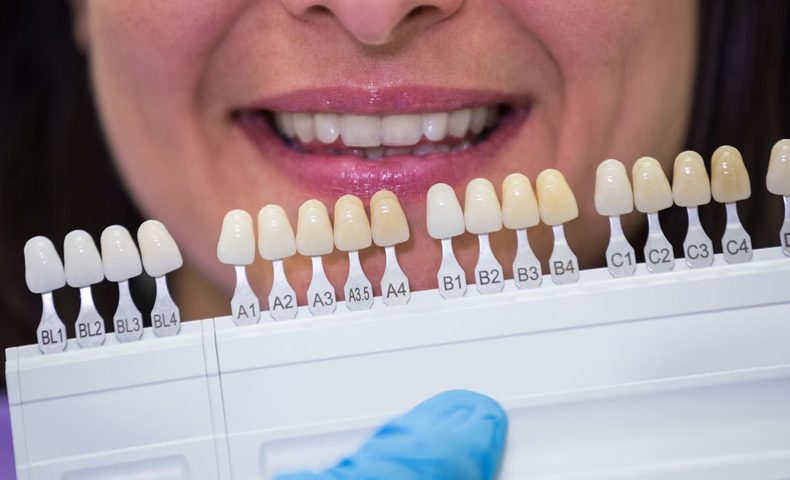Introduction
Ever wondered why you wake up with a sore jaw and, dull headache? You might not notice it, but there’s a higher chance you were grinding at night. That’s where nighttime dental devices come into play. These custom-made solutions work quietly while you rest, offering real benefits, from pain relief to better sleep and even straighter teeth.
In this article, we’ll explore types of nighttime dental devices, how they work, who needs them, and how to choose the right one for your lifestyle and oral health goals. Whether you’re dealing with bruxism, TMJ disorders, or simply want to align your teeth discreetly at night, there’s a solution designed for you.
What Are Nighttime Dental Devices?
Nighttime dental devices are oral appliances designed to be worn while sleeping. They serve a variety of functions, from protecting your teeth when they are clenched and helping you have better sleep quality. These devices are usually recommended by dentists based on your specific oral health condition.
Some common examples include:
- Night guards (hard or soft night guard)
- Mandibular advancement devices (MADs)
- Retainers
- Clear aligners (daytime and nighttime wear)
Each of these devices serves a unique purpose, but they all aim to improve your quality of life by ensuring your oral health is protected while you rest.
Why Nighttime Devices Matter for Your Oral Health and Sleep
Your mouth, jaw, and breathing all play a role in your nightly recovery. Here’s what untreated dental or sleep issues can lead to:
- Tooth damage due to grinding
- Jaw misalignment and TMJ pain
- Poor sleep due to snoring or sleep apnea
- Shifting teeth after orthodontic treatment
- Interrupted sleep and daytime fatigue
Using the right dental device can prevent these problems before they get worse.
1. Soft Night Guards:
A soft night guard is one of the most popular solutions for people who clench or grind their teeth during sleep.
Pros:
- Prevent teeth from grinding
- Reduces morning headaches and jaw pain
- Comfortable for light to moderate grinders
- Easy to adapt to for first-time users
Cons:
- Not ideal for heavy grinders
- Requires regular cleaning to prevent bacterial buildup
Best For: People experiencing mild to moderate grinding or clenching who want a comfortable and affordable solution.
2. Invisible Aligners:
You may already know about clear aligners, but did you know some brands now offer nighttime-only options? These Invisible Aligners gently shift your teeth while you sleep, typically worn for 8–10 hours nightly.
Pros:
- No daytime wear, making them ideal for busy professionals
- Comfortable and tailored to your teeth
- Clear and discreet, virtually invisible even while wearing
- Often more affordable than traditional braces
Cons:
- Slower results compared to full-day wear
- Not suitable for all orthodontic cases
- Requires consistent nightly use to see results
Best For: Adults with mild to moderate misalignment who don’t want to use it during the day.
3. Mandibular Advancement Devices (MADs):
If your partner complains about your snoring, or if you’ve been diagnosed with mild obstructive sleep apnea, MADs could be the device you need.
MADs are worn over the teeth and gently reposition the lower jaw forward, helping to open the airway and reduce snoring or apnea events.
Pros:
- Improves airflow and oxygen levels during sleep
- Often recommended for mild to moderate OSA
Cons:
- Can cause initial jaw or tooth soreness
- May take time to adjust to
- Requires regular dental check-ups
Best For: People diagnosed with mild to moderate sleep apnea issues.
4. Retainers: Keep Your Smile in Place
Finished with orthodontic treatment? Don’t skip your retainers just yet. These nighttime devices are essential for maintaining your newly aligned teeth.
There are two main types:
- Hawley retainers
- Clear retainers
- Fixed retainers
Pros:
- Prevents teeth from shifting post-treatment
- Easy to wear and maintain
- Custom-fitted for maximum retention
Cons:
- Needs replacement after wear and tear
Best For: Anyone who has completed orthodontic treatment and wants to preserve their results.
How to Choose the Right Nighttime Dental Device
The best device for you depends on your symptoms, oral health goals, and lifestyle. Here are some key considerations:
- If you grind your teeth or wake up with jaw pain, try a soft night guard.
- If you want straighter teeth, go for invisible aligners.
- If you snore or have mild sleep apnea, consider a MAD device.
- If you finish braces or aligners, stick with retainers.
Still unsure? Consult with your orthodontist. They can evaluate your bite, teeth alignment, and sleep patterns to recommend the right fit for you.
Wrap up:
Nighttime dental devices are more than just protective tools, they are essential for maintaining oral health, improving sleep quality, and enhancing your smile. Whether you’re dealing with teeth grinding, seeking orthodontic improvements, or struggling with snoring or sleep apnea, there’s a solution that fits your needs.
From soft night guards for those with mild grinding issues to invisible aligners that work while you sleep, these devices offer comfort and effectiveness without interrupting your day. For those with snoring or sleep apnea, mandibular advancement devices. And if you’ve completed your orthodontic treatment, retainers are your key to keeping your smile intact. These devices not only help protect your teeth but also contribute to better rest and overall well-being.
So, whether you’re looking to prevent further damage, align your teeth, or sleep more soundly, the right nighttime dental device can significantly improve your life. Take the first step towards a healthier smile and restful nights by discussing your options with your dentist or orthodontist today.

